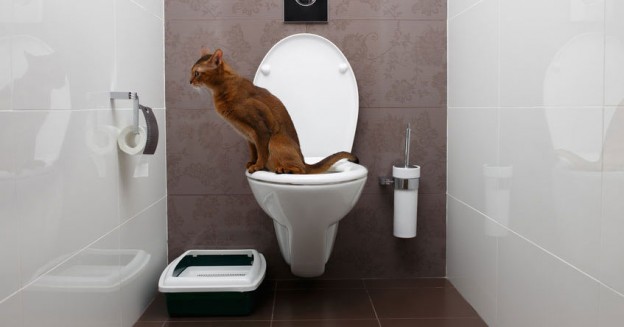The Consequences of Flushing Cat Poop Down Your Toilet - Safeguard Your Plumbing
The Consequences of Flushing Cat Poop Down Your Toilet - Safeguard Your Plumbing
Blog Article
Presented here in the next paragraph you'll find a good deal of quality material relating to Don’t flush cat feces down the toilet.
Intro
As pet cat proprietors, it's vital to bear in mind how we take care of our feline buddies' waste. While it may seem practical to flush feline poop down the bathroom, this practice can have detrimental effects for both the atmosphere and human health.
Ecological Impact
Flushing pet cat poop introduces harmful pathogens and bloodsuckers into the water supply, posturing a considerable threat to water ecological communities. These contaminants can adversely affect marine life and compromise water top quality.
Health and wellness Risks
In addition to ecological issues, purging feline waste can also posture wellness risks to people. Cat feces might include Toxoplasma gondii, a parasite that can cause toxoplasmosis-- a possibly extreme disease, specifically for pregnant women and individuals with damaged body immune systems.
Alternatives to Flushing
Thankfully, there are safer and more liable methods to take care of feline poop. Think about the following choices:
1. Scoop and Dispose in Trash
The most common approach of taking care of pet cat poop is to scoop it into a biodegradable bag and toss it in the trash. Make certain to use a dedicated trash scoop and dispose of the waste immediately.
2. Usage Biodegradable Litter
Choose eco-friendly feline clutter made from materials such as corn or wheat. These litters are environmentally friendly and can be securely thrown away in the garbage.
3. Hide in the Yard
If you have a backyard, consider hiding cat waste in an assigned location away from veggie gardens and water resources. Make certain to dig deep enough to prevent contamination of groundwater.
4. Install a Pet Waste Disposal System
Buy an animal waste disposal system particularly created for cat waste. These systems utilize enzymes to break down the waste, decreasing smell and ecological effect.
Conclusion
Responsible family pet ownership extends past giving food and shelter-- it likewise includes appropriate waste management. By refraining from purging pet cat poop down the commode and opting for alternate disposal methods, we can decrease our ecological footprint and safeguard human health.
Why Can’t I Flush Cat Poop?
It Spreads a Parasite
Cats are frequently infected with a parasite called toxoplasma gondii. The parasite causes an infection called toxoplasmosis. It is usually harmless to cats. The parasite only uses cat poop as a host for its eggs. Otherwise, the cat’s immune system usually keeps the infection at low enough levels to maintain its own health. But it does not stop the develop of eggs. These eggs are tiny and surprisingly tough. They may survive for a year before they begin to grow. But that’s the problem.
Our wastewater system is not designed to deal with toxoplasmosis eggs. Instead, most eggs will flush from your toilet into sewers and wastewater management plants. After the sewage is treated for many other harmful things in it, it is typically released into local rivers, lakes, or oceans. Here, the toxoplasmosis eggs can find new hosts, including starfish, crabs, otters, and many other wildlife. For many, this is a significant risk to their health. Toxoplasmosis can also end up infecting water sources that are important for agriculture, which means our deer, pigs, and sheep can get infected too.
Is There Risk to Humans?
There can be a risk to human life from flushing cat poop down the toilet. If you do so, the parasites from your cat’s poop can end up in shellfish, game animals, or livestock. If this meat is then served raw or undercooked, the people who eat it can get sick.
In fact, according to the CDC, 40 million people in the United States are infected with toxoplasma gondii. They get it from exposure to infected seafood, or from some kind of cat poop contamination, like drinking from a stream that is contaminated or touching anything that has come into contact with cat poop. That includes just cleaning a cat litter box.
Most people who get infected with these parasites will not develop any symptoms. However, for pregnant women or for those with compromised immune systems, the parasite can cause severe health problems.
How to Handle Cat Poop
The best way to handle cat poop is actually to clean the box more often. The eggs that the parasite sheds will not become active until one to five days after the cat poops. That means that if you clean daily, you’re much less likely to come into direct contact with infectious eggs.
That said, always dispose of cat poop in the garbage and not down the toilet. Wash your hands before and after you clean the litter box, and bring the bag of poop right outside to your garbage bins.
https://trenchlesssolutionsusa.com/why-cant-i-flush-cat-poop/

I have been very fascinated with How to Dispose of Cat Poop and Litter Without Plastic Bags and I'm hoping you enjoyed our article. Kindly take the opportunity to distribute this blog post if you enjoyed it. We recognize the value of reading our article about Can You Flush Cat Poo or Litter Down the Toilet?.
Call Today Report this page